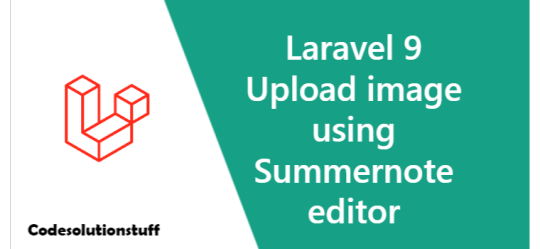#how to use summernote editor in laravel
Explore tagged Tumblr posts
Text
Integrate Summernote Tutorial Example in Laravel 9
Integrate Summernote Tutorial Example in Laravel 9
Example of a tutorial for Laravel 9 summernote integration. We’ll demonstrate how to set up and use Summernote in a Laravel 9 application in this article. It’s as simple as adding Summernote to the page where you want it to appear to add a Plugin to Summernote. When initialized, some plugins may additionally dynamically apply styles to the DOM. Usually, the Summernote Script is loaded first,…

View On WordPress
#how to add summernote in laravel#how to install summernote in laravel#how to use summernote editor in laravel#laravel summernote editor example#laravel summernote example#summernote editor in laravel
0 notes
Text
Integrate Summernote Tutorial Example in Laravel 9
New Post has been published on https://www.codesolutionstuff.com/integrate-summernote-in-laravel-9/
Integrate Summernote Tutorial Example in Laravel 9

Example of a tutorial for Laravel 9 summernote integration. We'll demonstrate how to set up and use Summernote in a Laravel 9 application in this article. It's as simple as adding Summernote to the page where you want it to appear to add a Plugin to Summernote. When initialized, some plugins
#how to add summernote in laravel#how to install summernote in laravel#how to use summernote editor in laravel#laravel summernote editor example#laravel summernote example#summernote editor in laravel
0 notes
Text
Integrate Summernote Tutorial Example in Laravel 9 - CodeSolutionStuff
#artificial intelligence#Programming#php#cloud#machine learning#laravel#codesolutionstuff#codesolution#JavaScript#DataScience#MachineLearning#Analytics#AI#ML#angular#Tech#Python#ReactJS#DataScientist#Coding#SQL#bot#Cloud#Typescript#Github#Data#BigData#DL#machinelearning
0 notes
Text
#websolutionstuff#laravel#laravel9#laravel8#laravel7#php#jquery#example#image upload in laravel 9#summernote editor#summernote#editor
0 notes
Text
#techsolutionstuff#laravel#laravel 8#laravel7#laravel6#example#php#jquery#text editor#summernote editor#summernote text editor
0 notes
Link
0 notes
Text
Laravel 9 Upload image using Summernote editor

A basic Javascript package called Summernote Editor can be used to create online WYSIWYG web editors. Any web application can use the Summernote editor by downloading it or using CDN links from a third party. Additionally, you can upload photos to a server via Summernote. In this article, we'll discuss how to include the Summernote editor into a Laravel 8 application for creating blog material. We'll also talk about submitting photos for use as in-article graphics. We'll start the tutorial from scratch and work our way up. To construct a Summernote editor example in a Laravel 8 application, follow the instructions below.
Table of Content
- Step 1: Generate new Laravel application - Step 2: Configure mysql database in .env file - Step 3: Create migration - Step 4: Create Article model class - Step 5: Create controller class - Step 6: Create new routes - Step 7: Create blade views
Step 1: Generate new Laravel application
Using the composer command, we will first create a brand-new Laravel application. To build a new Laravel application, launch the Terminal or Command Prompt and enter the command below. composer create-project --prefer-dist laravel/laravel article and switch the Laravel application directory in the Terminal. cd article
Step 2: Configure mysql database in .env file
Open the Laravel application you just created in your preferred text editor. Open the environment.env file in the root directory and modify the database credentials to match your MySQL. DB_CONNECTION=mysql DB_HOST=127.0.0.1 DB_PORT=3306 DB_DATABASE=article DB_USERNAME=root DB_PASSWORD=secret
Step 3: Create migration
We will generate a migration file for the articles table in the third step. Run the artisan command listed below from the Terminal to create a migration. php artisan make:migration create_articles_table The database/migrations directory will now contain a migration file. To the up() method, open the migration file and add the two additional fields. The table fields are as follows. Read the full article
0 notes